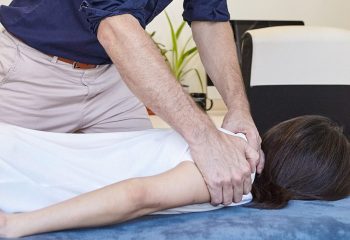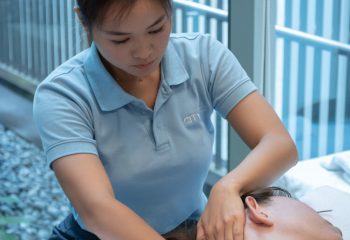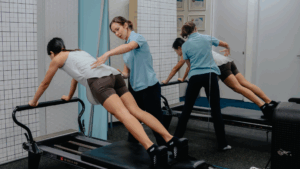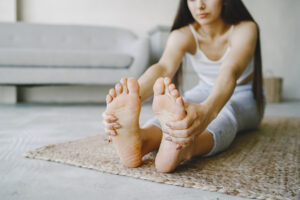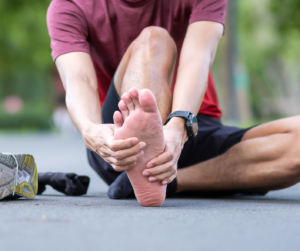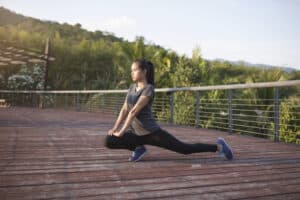Incontinence is a challenging issue that can affect women of all ages and backgrounds. It is the involuntary loss of urine from the bladder, which can range from occasional leaks to complete loss of control over urination. This condition can be caused by a variety of factors such as pregnancy, childbirth, menopause, obesity and neurological disorders. Incontinence in women can also be related to lifestyle changes such as increased physical activities or an increase in caffeine intake.
The good news is that incontinence is treatable! With the right help and support, women can live life without fear of urinary leakage and enjoy their daily activities with confidence. Read on to find out what are the different types of incontinence, the various treatment methods and how physiotherapy can help!
What are the different types of incontinence?
- Stress Urinary Incontinence (SUI) is caused by physical activities such as coughing, sneezing, jumping or running that put extra pressure on the bladder. Symptoms of SUI can include wetting yourself when you laugh, cough or sneeze.
- Urge Urinary Incontinence (UUI) occurs when sudden urges to urinate cause involuntary leakage before you can get to a restroom. Common symptoms of UUI include feeling the need to urinate often and not being able to reach a restroom in time.
- Overflow Urinary Incontinence (OUI) is caused when the bladder does not empty completely, leading to an overflow of urine. Symptoms of OUI can include frequent or constant dribbling of urine and urinary incontinence with minimal physical activity such as standing up or walking
What are some causes of incontinence in women?
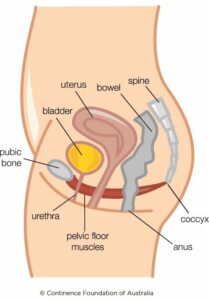
Incontinence in women can be caused by a variety of things. It is important to note that there is no single cause of incontinence, which means the underlying issue could vary from woman to woman. Here are some common causes of female incontinence:
- Pelvic floor weakening – This occurs when the muscles that support the pelvic organs become weakened, leading to urinary leakage.
- Childbirth and pregnancy – During delivery, the muscles and tissues of the pelvic floor can be stretched or torn, which can affect their ability to control urinary flow. Pregnancy itself can also weaken these muscles due to hormone changes, leading to incontinence after giving birth.
- Menopause – During this time, women experience a decrease in the hormone estrogen, which can cause pelvic muscles to become weaker and more prone to incontinence.
- Urinary tract infection (UTI) – Bacteria from a UTI can irritate the bladder, causing involuntary leakage of urine.
- Certain medications – Some medications, including sedatives and antidepressants, can cause the bladder to become overactive and lead to incontinence.
What are some treatment methods for incontinence?
- Lifestyle changes may involve reducing fluid intake to help with urinary urgency or eating more fiber to reduce constipation. Other lifestyle modifications may include avoiding foods and drinks that are known bladder irritants such as caffeine, alcohol and acidic juices. Exercise can also help build strength in the pelvic muscles which helps support the bladder. Bladder training is a great way to retrain the bladder by gradually increasing how long you wait between trips to the bathroom.
- Medications such as anticholinergics and tricyclic antidepressants can be prescribed by your doctor if lifestyle modifications do not work. These medications relax the bladder muscle and can reduce urinary frequency.
- Physiotherapy or physical therapy is another treatment option for incontinence. Pelvic floor exercises help to strengthen the muscles in the pelvic area that support the bladder. Biofeedback techniques are also used which teach patients how to control their bladder muscles by monitoring electrical signals from the nerves in their pelvic floor muscles.
- Surgery may be necessary for severe cases of incontinence or when other treatments have failed. Surgery options include sling procedures, artificial urinary sphincter implantation, and bulking agents which involve injecting collagen into the walls of the urethra to help keep it closed.
With the right combination of lifestyle modifications, medications, physiotherapy and surgery, incontinence can be effectively managed and treated.
What are some benefits of incontinence physiotherapy?

Treating incontinence with physiotherapy can provide significant improvements in a patient’s quality of life by reducing symptoms and restoring bladder control. In addition, it is a non-invasive and cost-effective way to effectively manage incontinence. With the right kind of help and guidance from a qualified physiotherapist, many patients are able to successfully overcome their incontinence issues.
Benefits may include:
- Improved bladder control;
- Reduced frequency and urgency of urination;
- Reduction in leakage episodes;
- Increased awareness of sensations related to voiding;
- Improved posture and abdominal muscle strength;
- Enhanced sexual function;
- Reduced stress levels associated with incontinence.
What are some treatment methods used during incontinence physiotherapy?
Bladder training for urge incontinence
Bladder training for incontinence is a technique used to help people manage their bladder control. It works by helping individuals recognise their body’s natural signals that indicate the need to go, so they can use those cues to plan and schedule trips to the bathroom. Through regular practice, it can eventually lead to greater control over urination, reducing or eliminating episodes of accidental leakage.
Our physiotherapists can help with bladder training by providing an individualised program tailored to your needs. This could include lifestyle advice, pelvic floor exercises, and techniques for improving bladder control such as timed voiding or double voiding. Our physiotherapists also provide education about how to manage any underlying conditions that may be impacting bladder health, such as constipation or diabetes. With our guidance, you can learn how to maintain bladder health and strengthen the muscles that control your bladder function.
Pelvic floor exercises (also known as Kegel exercises)
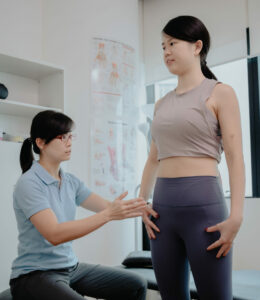
Pelvic floor exercises, also known as Kegels, are a great way to strengthen the muscles of your pelvic floor. These muscles support your bladder, uterus, and rectum and help control urinary and bowel movements. When these muscles become weak from aging or childbirth, they can cause incontinence or other issues with bladder control. Doing pelvic floor exercises can help improve bladder control, reduce leakage, and relieve pelvic pain.
Our physiotherapists can help you improve the strength and coordination of your pelvic floor muscles by assessing your individual needs, providing tailored advice and creating a personalised treatment to help you gain control over these important muscles. During your treatment journey, you’ll learn which exercises are right for you, and how often to do them in order to achieve the best results. Our physiotherapists can also provide guidance on how to make lifestyle changes that will benefit your pelvic floor health.
Manage incontinence and take back control of your bladder today with physiotherapy!
As we’ve seen, physiotherapists play an essential role in helping women manage incontinence. From customised exercise plans to lifestyle and dietary changes, physiotherapy is often the most effective and non-invasive way to reduce incontinence symptoms. So if incontinence is affecting your quality of life, don’t wait any longer- speak to our physiotherapists today! Together, we’ll come up with a treatment plan that works best for you and puts you back in control of your bladder so that you can . Remember – incontinence can be managed successfully when the right help is available!


